Build With Employees, Not For Your Employees
Ever notice how internal comms sometimes feel like a one-way broadcast? Leadership sends messages down, employees consume and maybe there’s an occasional feedback survey. But what if we flipped the script? We’ve been contemplating something different: employee-driven communications strategy—and let me tell you, it’s a game changer. Here’s why...
Jeff Novak
4/9/20252 min read


Ever notice how internal comms sometimes feel like a one-way broadcast? Leadership sends messages down, employees consume and maybe there’s an occasional feedback survey. But what if we flipped the script?
We’ve been contemplating something different: employee-driven communications strategy—and let me tell you, it’s a game changer.
Here’s why:
Employees know where the gaps are
No one understands communication blind spots better than the people living them. Recently, we sat down with a client’s cross-department teams to map out pain points. Turns out, the messages landing in inboxes weren’t always the ones employees needed—they wanted clearer updates on priorities, more transparency around decisions, and yes, a little more human touch.
When you include employees, they’re more invested
It’s one thing to ask people to be “brand ambassadors” after the fact. It’s another to invite them into the strategy room early on. Suddenly, those emails, town halls and Slack announcements don’t feel like corporate wallpaper—they’re meaningful, co-owned and better tailored to how they consume information. This, if you ask us, is where it’s at. When employees are invested – when they have “skin in the game” – they are more engaged, more enthusiastic and are more satisfied.
The impact? Real connection—and real results
With a more employee-led approach, engagement metrics won’t just creep up—they’ll skyrocket. But more importantly, the ripple effects go way beyond clicks and open rates.
When employees feel seen, heard and empowered, collaboration improves. Teams are more aligned, silos shrink, and people spend less time deciphering mixed messages—and more time executing. That clarity and trust translate directly to productivity, retention and even innovation.
Think about it:
Lower turnover. Employees who feel involved in decision-making are more likely to stay.
Fewer bottlenecks. Clear, trusted communication = faster decision-making at every level.
Better customer experience. Engaged, well-informed employees naturally create better external interactions.Stronger adaptability. When big changes happen, your workforce is already in sync and ready to pivot.
It’s not just a feel-good initiative—it’s a strategy that drives the bottom line.
At the end of the day, employees aren’t just your audience—they’re your best strategists. Let them help shape the message. You’ll be amazed at how much more powerful it becomes.
ABOUT US
Creating communications to engage, inform and inspire.
Contact US
WORK WITH US
hello@phase78.com
© 2025. All rights reserved.
Recommended posts
